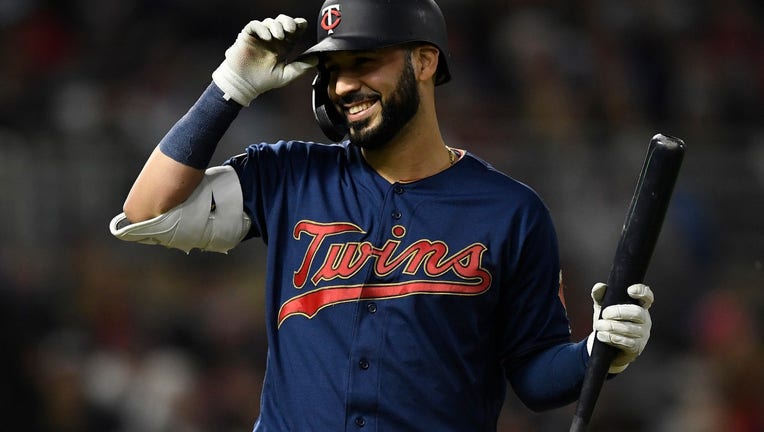Twins Daily: In appreciation of Marwin Gonzalez

Marwin Gonzalez #9 of the Minnesota Twins reacts after lining out to the New York Yankees to end the fourth inning in game three of the American League Division Series at Target Field on October 07, 2019 in Minneapolis, Minnesota. ((Photo by Hannah Foslien/Getty Images))
MINNEAPOLIS - Originally published on TwinsDaily.com
Marwin González had a career year in 2017 which we later found out may have been aided by… other variables. He’s struggled to replicate that performance ever since, and has become known for being a slow starter. 2020 however offers some encouraging signs in the early going.
Marwin suffered from a knee issue that flew under the radar in 2019. Regardless he provided passable offense and his versatility was priceless down the stretch. In the offseason he had a minor procedure done to clean up his ailing knee, and the early results have been positive.
Marwin has posted a slash line of .297/.381/.459. Much more impressive than his slash line of .147/.216/.176 through 11 games in 2019. His wRC+ of 142 is his best by far (albeit in a short stretch) since his career year in 2017. He’s been one of the quiet contributors to the offense in the early stages of this season while much of the lineup has struggled. So what’s behind Marwin’s offensive resurgence?
Marwin has always swung at pitches outside of the zone at a fairly decent rate. He did so over 35% of the time in 2019. Mitch Garver did so about 20% of the time for reference. So far in 2020, Marwin has reduced his chase rate to around 25%. The game plan here is obvious, Marwin is setting himself up for success by swinging at less pitches that are difficult to hit. Running parallel to this, Marwin has walked around 13% of the time to begin the season, which is a much higher rate than he’s ever managed before.
“Bad ball hitting” is a skill that has proven not to stand the test of time. As Marwin enters his age 31 season, it’s very possible that he decided to make a concerted effort to be more selective at the plate. It’ll be an interesting trend to watch and see if it’s just a small sample oddity or if he continues being more selective as the season carries on. The key to selectiveness at the plate being successful however is mashing the hittable pitches you do get.
We saw Mitch Garver make the most of being selective in 2019. He would take almost every pitch out of the zone and force the pitcher to come in with a cookie that he could put a good swing on. The strange thing about Marwin’s season so far is that he hasn’t punished many pitches in the zone yet. His exit velocity is almost identical to that of his 2017 season, and his launch angle is even a few degrees greater. Despite this, he has only “barreled” one ball, which explains why his slugging isn’t overly impressive yet.
All of this bodes well for Marwin. His start to the season has been encouraging and a necessary cog in a lineup that hasn’t hit its stride yet. Plate discipline is often the foundation to strong offensive output. If Marwin continues to display this new found skill, it should only be a matter of time until he starts barreling more balls and putting them into the gaps and seats.
This is likely Marwin’s final year in Minnesota and he’s going to play a near full time role between 3B, 1B and the outfield. You truly will not find a better “fill in” player for multitude of reasons. If you missed the proof of this in 2019, it’s at the forefront to begin 2020, as Marwin picks up the slack of not only the missing Josh Donaldson, but of the majority of the lineup that has yet to show any semblance of their 2020 selves. Appreciate Marwin everybody, he’s playing a huge role for your hometown Twins and this is likely the last year to do so.

